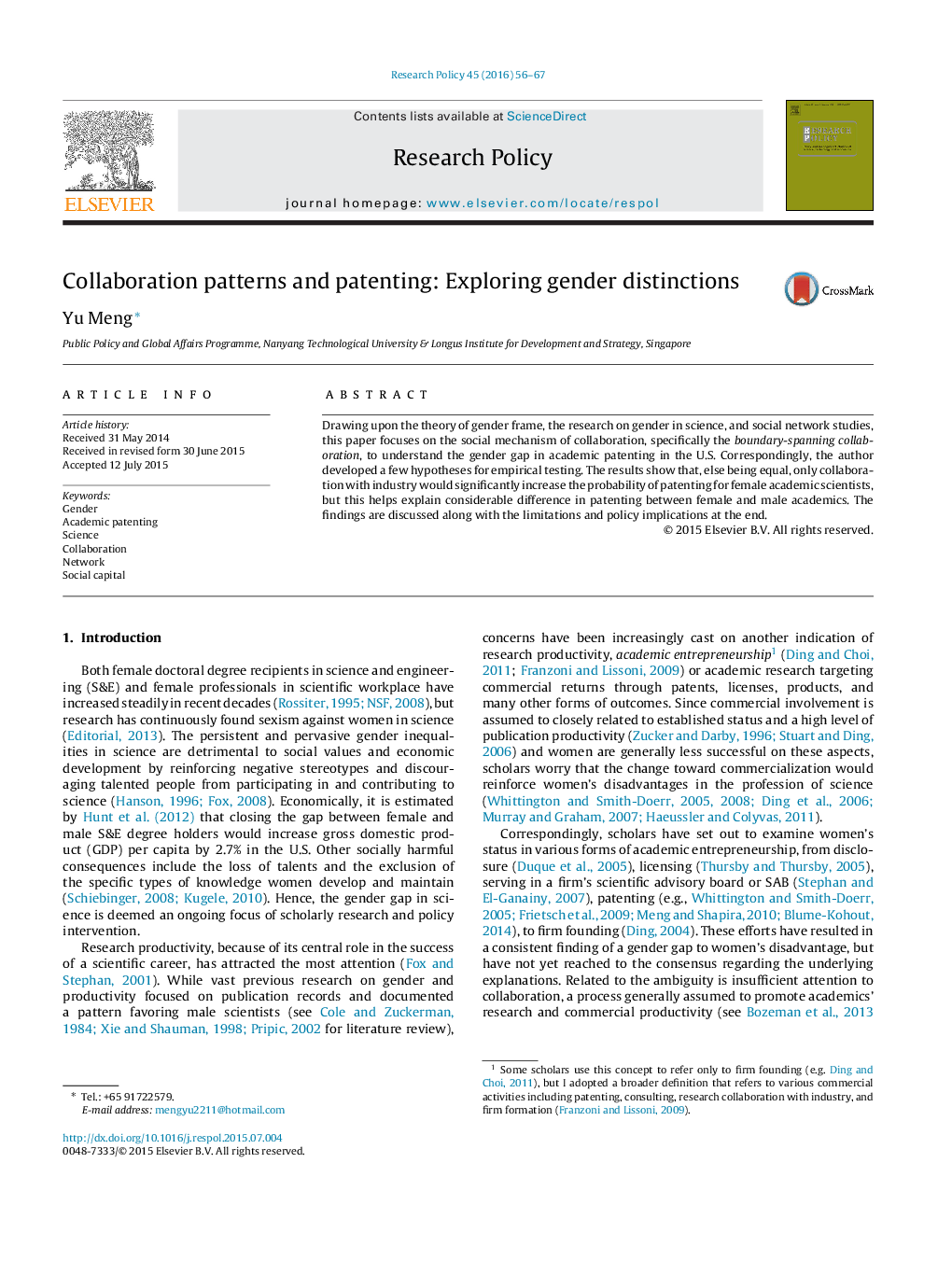| Article ID | Journal | Published Year | Pages | File Type |
|---|---|---|---|---|
| 10483249 | Research Policy | 2016 | 12 Pages |
Abstract
Drawing upon the theory of gender frame, the research on gender in science, and social network studies, this paper focuses on the social mechanism of collaboration, specifically the boundary-spanning collaboration, to understand the gender gap in academic patenting in the U.S. Correspondingly, the author developed a few hypotheses for empirical testing. The results show that, else being equal, only collaboration with industry would significantly increase the probability of patenting for female academic scientists, but this helps explain considerable difference in patenting between female and male academics. The findings are discussed along with the limitations and policy implications at the end.
Related Topics
Social Sciences and Humanities
Business, Management and Accounting
Business and International Management
Authors
Yu Meng,
